Fishing, Hunting and Camping
Tips, articles and reviews by people like you.
Catch More Fish With My Favorite Plastic, The Zoom Fluke
Every fisherman has their favorite go to fishing lure. Mine is the Zoom Salty Super Fluke. I have been using the Zoom fluke for years and wanted to show how to set the rig up.
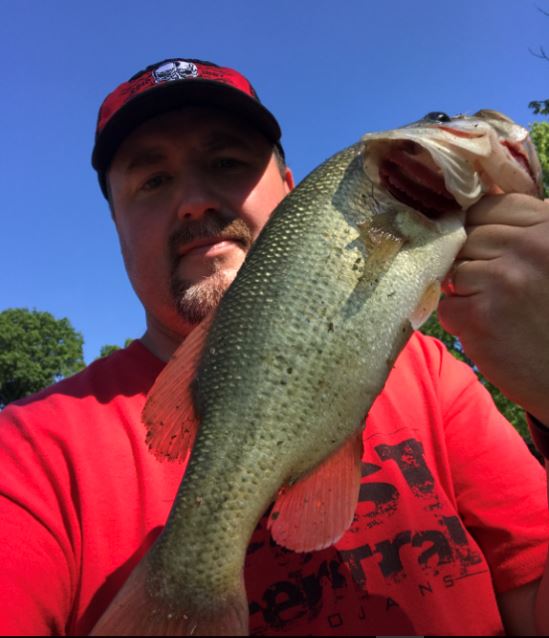
Me with a bass caught with a Fluke
The Zoom Salty Super Fluke
Like I mentioned above, the Zoom Salty Super Fluke is my go to plastic. But, in my experience, color matters. I have tried all color options but only have consistent success with the Watermelon Seed color. I’m sure this has to do with the part of the country I live in. I have tried the shad color on creeks and rivers but I always end up going back to the Watermelon Seed.
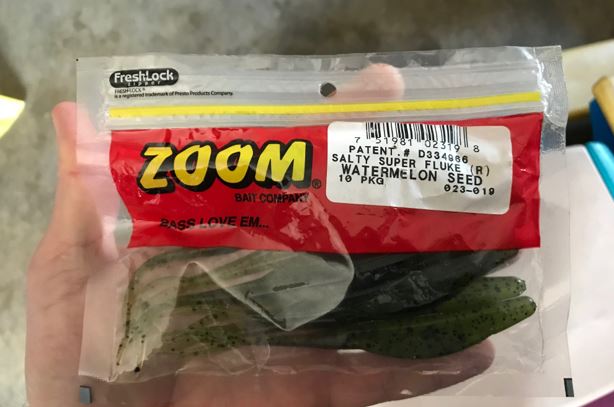
Above is a photo of the Flukes that I personally use. They can be hard to find, especially in the spring. I either get them from Walmart, Amazon or you can usually find them at most other fishing lure online store.
They come in a resealable bag which you will want to use. These Zoom Salty Super Flukes, will dry out on you.
What Type of Fish Will Hit The Zoom Fluke
When I introduce this lure to friends, the first question is usually, what hits it? Though the Zoom Salty Super Fluke is sold as a large mouth bass lure, I can tell you that many other fish do hit it. If you think about what the bait resembles, any predatorial fish will go after this lure.
I catch 90% large mouth with the Zoom Fluke but have also caught small mouth, hybrid bass, sauger, and even small catfish. I would only target large mouth, small mouth and possibly hybrid bass using the Fluke.
The Hook

Fishing the Zoom Fluke takes a specific rig to make it swim alive attracting feeding fish. Many will recommend using a regular worm hook but I like to use a weighted wide gap worm hook. When you tap the tip of your pole, your fluke jump up and then shimmers down quite nice. Depending on weight of your hook, the heavier, the faster action it will be.
I like to use a medium weighted hook so it gives plenty of action as the fluke drops, but also doesn’t dive. You want bass to see your lure as an injured bait fish that is flopping around a little.
You have a few choices when it comes to the brand you use. You can find reviews at places like Gear Lobo to help you with choices, but I prefer Gamakatsu for all my hooks (I love their circle hooks). Though a little more expensive, I find them to be thicker hold the sharpness. Your other option is Eagle Claw which is also easily found locally. I would stay away from the generic hooks.
How to Rig a Fluke
There may be other ways to rig a Zoom Salty Super Fluke, but I only do it one way. Below we are going to go over how to hook the fluke to give you wildly live action that will draw in large bass.
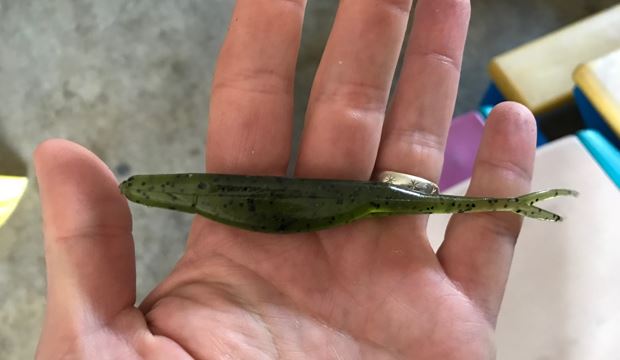
Take out a fluke and make sure it is usable condition. I find myself throwing old ones back into the bag when I don’t have a trash bag near by. Nothing is worse than being out and finding you have all heavily used lures!

Insert your hook through what would be the mouth of the fish going downwards. You should insert the hook as deep as the hook eye to the first corner. You want the tip of the hook on the lower part of the body.

Next, you want to pull the hook all the way through to the hook eye. At that time you will tun the hook so the point is going up into the fluke body. Photoed above, we have not put the hook back through the body yet, it is just resting inside the groves.
Note, when pulling the weighted part of the hook through the fluke, you can tear the body. It is recommended on wetting the weight lead (I spit on it) before going through the body.
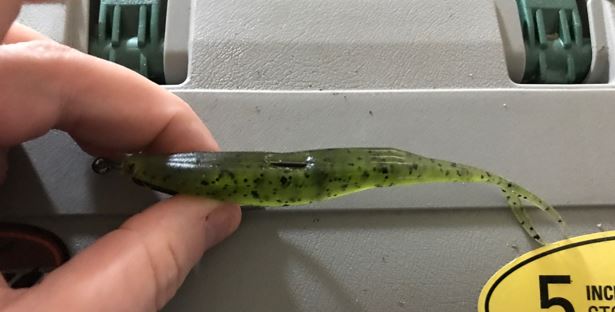
Next, you will want to pull the head of the fluke up to the eye and insert the hook into the belly of the fluke and come out the top. Once the tip of the hook is coming out the top, you tuck it in the back slightly to cover the tip. You tuck the tip to make it weedless and so it will not get hooked up on a rock or piece of wood.
Note: make sure not to sink the hook tip too far into the back of the fluke. When a fish hits, it has to be able to come out easily to set. Your just looking for enough so it will not get caught on something.
Photoed above is a fluke ready to cast. On the one above, it could be tighter up on the hook eye, I was in a hurry…
How to fish a Zoom Super Fluke
This subject is a little harder to explain than to show. I will give it a shot but check back later this spring, I will be creating a video.
I have best luck fishing this fluke in cover. Either along the bank, in grass or any heavy cover.
Once you cast, let the fluke drop to the bottom. Once it has bottomed out, you tap your tip forward. You don’t need much and depending on where your fishing will depend on the size of bump. When fishing is shallow water, I bump forward slightly (6 inches or so). In deep large water, I bump up.
Once you bump, you will let the fluke drop the the bottom again, then do it again. Keep it in action only letting it sit for a second or two before bumping again.
Conclusion
I hope you give the Zoom Super Fluke a chance. With a little practice, you will find that it can catch you some big bass.
So I’m sure you have a favorite/secret plastic or spinner, I mean everyone thinks they have the best bass fishing lures. So, share with us your go to lure and how you fish it!
The Hobie Kayak For Fishing
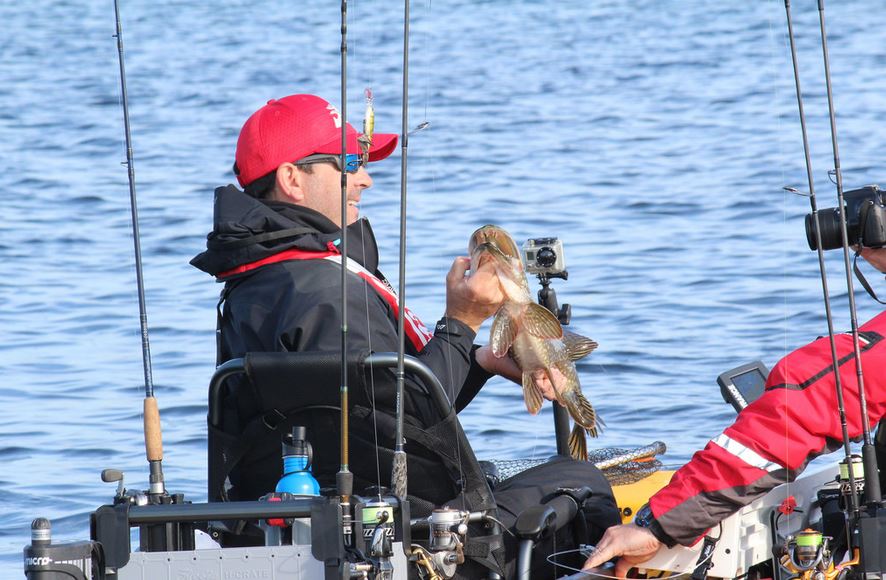
There’s an exciting new way that people are taking to fishing on the sea. Well, it’s not entirely new — it’s simply a sport that has gained a lot of popularity over the past few decades. It’s called kayak fishing! A kayak is a lightweight canoe built to endure the waves of every kind of body of water and can be used for all kinds of fun! So if you’re interested in paddling out on a kayak, then you’ll first want to understand what kind of kayak exactly you should buy. There are many kinds of fishing kayaks, including the nifty Hobie kayak.
The Hobie Cat Company has been manufacturing sailing, kayaking, and fishing gear for years. The company was started by a high school kid who wanted to build awesome surf boards and it eventually grew to be what it is today. The Hobie Company began building sail boats and ultimately kayaks. Eventually outdoors enthusiasts with a particular affection for the water would come to own a collection of Hobie gear, from the Hobie kayak to the Hobie sailboat.
In fact, there are more than 100,000 Hobie sailboats out on the ocean today! Owners of a Hobie sailboat and/or a Hobie kayak love to fish all over the blue seas. They deem this lifestyle “the Hobie way of life.” The Hobie kayak that is most popular is the novel, inventive pedal-driven kayak. You don’t have to struggle to paddle around the water, you can let your feet help out too! The Hobie kayak is indeed a unique kayak for fishing. You can check out how the Hobie stacks up to a list of the best fishing kayaks here.
Whether you want to relax and escape the constraints of the land, go on a fishing trip, the hobie specializes in these features. Whats great about their kayaks is they come with perfect spaces for putting your rods and areas for keeping your lures and different kayak tools.
Hobie specializes in creating some of the coolest, most affordable, and of course — original – water crafts and equipment.
If you’re trying to find a manufacturer with experience and integrity, then look no further than Hobie. A Hobie kayak is about 50 years in the making after all. Hobie’s been around since the 1960’s, when water sports first really found their place in America. Hobie’s designs have earned the company accolades from all others in the industry, including actual awards for design. Indeed, a Hobie kayak or Hobie sailboat is what every other ordinary kayak or sailboat aspires to be.
But before you browse the different brand-names out there, you might be wondering what kind of fishing kayak to invest in in the first place. There are three basic kinds of fishing kayaks. The first one is the most typical. It’s called a “rigid” kayak and is often crafted of beautiful wood. Sturdier, more lightweight fiberglass and/or plastic kayaks are popular as well — though a plastic kayak costs a lot more than a charming wood kayak.
However, rigid kayaks are not necessarily the ideal buy for a fan of water sports. Folding kayaks are equally as robust and long-lasting, but because of how they are designed they can be easily transported.
But the favorite for those who enjoy the ocean as much, if not more, than the land, are inflatable kayaks! So if you’re getting a Hobie kayak, perhaps you should consider getting an inflatable Hobie kayak. The reason inflatable kayaks are so fun is because they are very easy to maneuver around with. Unless you have a Hobie kayak with pedals, an inflatable kayak is really the way to go. Not only is it easy to take the water — any kind of water in fact — but it’s also easy amazingly portable and easy to store. To learn more about fishing kayaks and the best fishing kayaks you can check out this kayaker guide toplist and review www.kayakerguide.com/best-fishing-kayak




